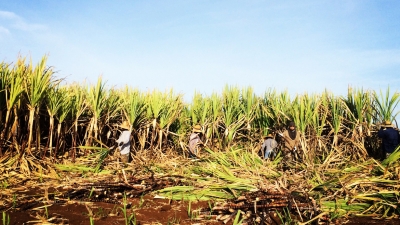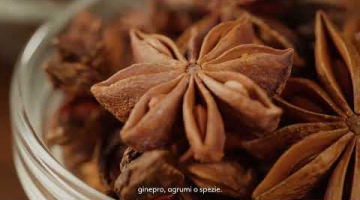The 50th state has had a complicated relationship with commercial agriculture for decades. But a new wave of spirits made from local produce is offering a fresh vision of what "Made in Hawaii" could mean.
"It's not necessarily the most efficient way to harvest sugar cane,” says Robert Dawson, about the way Hawaii’s Manulele Distillers handpicks a different cultivar of native Hawaiian cane once a month for their single variety agricole-style rum.
Manulele, which Dawson co-owns, is one of a handful of micro-distilleries that have opened in Hawaii over the past few years with a mission to make site-specific alcohol from island-grown products. And while Hawaii is no stranger to exporting agriculture, what makes these projects notable is the emphasis on using products from small-scale farms—a significant departure from the commodity crop model that has historically dominated the islands’ offerings. In doing so, these distilleries are offering a fresh vision of what “Made in Hawaii” could mean.
With its idyllic climate and year-round growing season, it would be easy to imagine Hawaii as a sort of Alice Waters-ish tropical fever dream of locavore bounty, where a ripe banana or coconut is never far from hand. While that vision may be true for backyard farmers, the reality for everyone else is more complicated. Small to mid-sized farms have faced tremendous headwinds thanks to a hydra of problems left over from plantation-era policies and economics. And that has contributed to a paradox: In one of the best growing areas in the world, estimates say that between 85 and 90 percent of food is imported.
Until the very recent past, plantations (huge tracts of land farmed for commodity crops that were exported) dominated the story of agriculture in the islands. Large-scale sugar farming took root in the 19th century, with pineapple not far behind, as entrepreneurs from the defunct whaling and sandalwood industries looked for their next investment. These exports—the Dole and Del Monte pineapples, the C&H Sugar—were able to command a premium in the market by trading on the image of Hawaii.
Untangling how the plantations came to affect so much of farming in modern-day Hawaii—even after their exodus in the late 20th century to cheaper lands in the Central Americas and Asia—is no easy task. Some connections are straightforward: as plantations grew larger, acquiring smaller farms and pushing out subsistence farmers, ownership of farmland became concentrated among a few companies.
Dawson, the co-owner of Manulele, originally began research on sugar cane with the hopes of finding a renewable fuel source. His project veered into agricole-style rum, however, when he discovered the many types of native Hawaiian sugar cane. While we may think of sugar as a generic commodity today, it comes in an array of varieties, many of which are native to Hawaii. Ethnobotanist Noa Lincoln, who worked with Dawson to DNA test the varieties, says that reading the historical records, there may have been as many as 90 distinct varieties, but today the number is closer to 50.
Others are less visible: often these plantation parcels of land would have only one well, so subdividing the land into smaller farms after a sale becomes an expensive endeavor if each farmer needs to build a new well or lease a water source. Add in that most farming leases don’t allow farmers to live on their land (it gets complicated when farmers age out of work), and the economic prospects of getting into small-scale farming, and it quickly gets grim.
It seems as though every permit for a new housing development on former plantation land has become an opportunity to vote on what the future of the islands should look like—more housing or diversified agriculture? There is no easy answer when real estate values stand at some of the highest in the nation and agricultural land parcels are bundled by the thousands of acres, rather than the five or ten needed to grow specialty crops.
But a movement to support local small-scale farming is growing slowly as awareness of food security issues increases and the farm-to-table mentality spreads. These new spirits projects could become an important part of the puzzle, both by creating an added value outlet for farmers to sell their crops and by being a visible ambassador for small-scale agriculture. It’s a more specialized and authentic “made in Hawaii,” with products that can only be made in the islands.
The concept of making something uniquely Hawaiian is what drew Japan-born Ken Hirata to the islands. “I was eating poi [a Hawaiian dish made from taro root] one day, and I was joking around that it would be nice to make a shochu from taro,” he says about how a trip to the islands 20 years ago changed his path. Now he is the owner ofHawaiian Shochu Company, located in Haleiwa, Hawaii, and makes shochu from local Okinawan sweet potatoes (and taro, soon, he says).
Shochu, a spirit distilled from a base (usually rice, sweet potato or barley) that has been fermented with a koji mold (the microorganism used in making sake), is more popular than sake in Japan but remains relatively unknown in the States.
Before moving to Oahu from Japan, Hirata, who had worked in finance, apprenticed with a sweet potato shochu master for three years. What he found when he began making shochu in Hawaii was surprising: “They came out differently,” Hirata says, on comparing bottles made from sweet potatoes from Japan versus Hawaii, or even from island to island. “It’s just like grapes—terroir.”
It’s this terroir-like differentiation that distillers such as Manulele, who is making the single-variety sugar cane rum, are counting on to help them stand out in the market.
Dawson, the co-owner of Manulele, originally began research on sugar cane with the hopes of finding a renewable fuel source. His project veered into agricole-style rum, however, when he discovered the many types of native Hawaiian sugar cane.
We may think of sugar as a generic commodity today, but it comes in an array of varieties, many of which are native to Hawaii. Ethnobotanist Noa Lincoln, who worked with Dawson to DNA test the varieties, says that reading the historical records, there may have been as many as 90 distinct varieties, but today the number is closer to 50.
Cane was brought to the islands by the Polynesian settlers and was used in many ways: as food and medicine, in rituals, as wind breakers to protect other crops. In the early 1900s, however, Hawaiian sugar plantations settled on a single hybrid cultivar that worked well in mass production. The native varieties—thought to be unusable commercially—were largely forgotten, shunted to botanical gardens or people’s yards as ornamental plants.
Dawson began researching potential uses for native cane and found that some of the qualities that made these cane varieties undesirable for producing crystalline sugar—such as a low juice to sugar ratio—worked well for rum made from cane juice, the agricole model. As a bonus, during testing, it became apparent that these heirloom varieties all taste different. Lahi, for instance, a yellow-greenish cane, is notably sweet and made rum that had grassy notes. Manulele, the company’s namesake variety, skewed earthy and bold.
The native cane still doesn’t lend itself well to mass plantings—it’s not disease resistant or easy to harvest, as many varieties grow crookedly. But for the scale that Manulele is working—12 acres planted on Oahu’s north shore and 15 more to be added at the distillery in central Oahu—Dawson says it’s viable.
This philosophy of thinking small is echoed at Ocean Vodka, which opened an 80-acre sugar cane farm on Maui in 2012. “Organic farming is a big part of the story and the culture on the farm,” says Bill Scott, Ocean Vodka’s head distiller.
Maui, home to one of the last commercial sugar mills in the islands, has a particularly complicated relationship with sugar cane. The industry has supported many of its residents and the current fields of cane stave off more residential and resort development and preserve open space. But some environmentalists complain that cane burning, a technique employed by sugar companies in which they set cane fields on fire to make the cane easier to harvest, causes respiratory problems.
“When you see commercial sugar farming, you see a lot of smoke,” says Scott. “What they’re doing when they burn those fields is eliminating what we consider to be a valuable component of the cane—the leaf.” Instead, Scott says, they mulch or compost the unused plant material to condition and enrich the soil. It’s a lot of extra effort on an island where molasses, the byproduct of making crystalline sugar and the base for many a commercial spirit, is readily available. But Scott says that’s not what Ocean Vodka is about: “There are cheaper ways to make products.”
In a nice bit of symbiosis, in championing small and niche agriculture, these spirits can differentiate themselves from the raft of industrially-made liquors. The more terroir they show—the more “made in Hawaii”—the bigger the premium they can charge for their bottles.
And so far, it would seem that the efforts of these young distilleries have been met with success. Hirata has sold out of his first two batches of shochu and the single variety Kõ Hana rums from Manulele have made their way to top cocktail menus in the state. Up next? Careful expansion, but “only Hawaii grown stuff,” says Hirata.
thanks to original post: http://punchdrink.com/articles/redefining-what-made-in-hawaii-means/
















